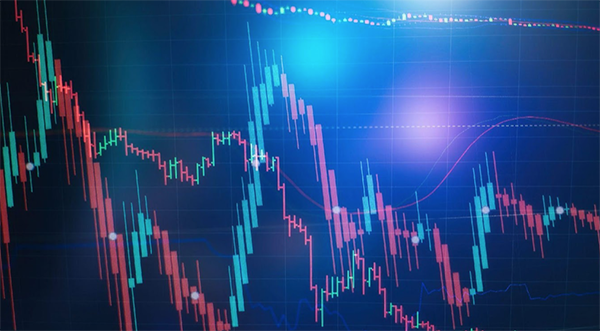Forex Trading Calculators: How to Use Them to Your Advantage
By Space Coast Daily // December 17, 2022

If you want to be a successful forex trader, it is important to have a solid understanding of how to use trading calculators. These tools can help you calculate things like your risk-to-reward ratio, position size, and potential profits.
Using a calculator can help you determine your overall risk exposure and make sure that you are not over-leveraging your account.
There are a number of different forex trading calculators out there, such as Forex position size calculator, forex profit calculator, forex pip calculator, each providing calculations of different aspects of the trade.
They take into account things like your entry and exit points, the currency pair you’re trading, your stop loss, and your take profit.
Forex trading calculators are a valuable tool in your forex trading toolbox. So, in this article, we will understand trading calculators and their importance in forex trading.
What Are Forex Trading Calculators?
A forex calculator is a tool that helps forex traders calculate different aspects of their trading strategy, such as potential profits, risks and costs.
With the help of forex calculators, you plan and execute your trading strategies more effectively and get a better understanding of their risks and potential profits. As a result, you can make more informed decisions about your trades and maximize your profits.
How Do Forex Trading Calculators Work?
There are three main steps to take when using a forex trading calculator:
1. Enter the Relevant Information
You’ll need to enter some basic information about your trade, including the currency pair, the size of the trade, and the current exchange rate.
2. Get the Result
Once you’ve entered the relevant information, you can calculate your potential profits, losses, and other information depending on the type of calculator – which we will discuss further in detail, you are using.
3. Manage Your Risks
It’s important to remember that even if you have a strong understanding of how to calculate your profits and losses, there is always risk involved in forex trading. Be sure to manage your risks carefully.
What Are the Benefits of Using Forex Trading Calculators?
Forex trading calculators can provide a number of benefits to traders. Here are some benefits of using these calculators
■ A forex trading calculator can help you plan your trade by helping with the estimate of different outcomes.
■ You can quickly and easily calculate different aspects of your trade, such as your potential profit, loss, and risk.
■ Forex trading calculators can be a useful tool for managing your risk. By entering in your stop loss and take profit levels, you can calculate your risk before you even place your trade.
■ They can also help you to plan your trade size – which can help you in making a better risk management plan.
■ A forex trading calculator can help you to spot trading opportunities. By quickly calculating different potential outcomes, you can take advantage of potential trades
■ Lastly, a calculator can simply make forex trading more enjoyable. By taking the guesswork out of complex calculations, you can focus on what you love about trading: the market itself.
5 Best Forex Trading Calculators to Add in Your Trading Toolkit
Now, it is time to discuss a few trading calculators that a trader must use in a trading journey.
1. Currency Calculator
A currency calculator is a very useful tool for forex traders as it helps them calculate the value of their currency pairs in real time. This way, they can make better decisions about when to buy or sell their currencies.
This calculator is also a great tool for risk management. By being able to see the value of your currency pairs in real time, you can more easily manage your risks. For example, if you see that a particular currency is losing value, you can sell it before it loses all of its value.
2. Profit Calculator
A forex profit calculator is a tool that helps traders calculate their potential profits from a trade. It takes into account the entry and exit prices, the number of units traded, and the account’s leverage.
The calculator is a useful tool for two reasons. First, it can help traders determine whether a trade is worth taking. Second, it can help them calculate their risk-to-reward ratio, which is an important factor in deciding whether to take a trade.
2. Pip Calculator
A pip calculator is a very useful tool for forex traders. It allows you to calculate your potential profits (or losses) on a trade, based on the number of pips that the currency pair moves.
The function of a pip calculator is very simple. You just enter in the currency pair that you are trading, the size of your trade, and the current exchange rate. The calculator will then tell you how many pips you could make (or lose) on the trade.
2. Fibonacci Calculator
A Fibonacci calculator helps traders make better decisions while trading forex by determining the right support and resistance levels along with calculating Fibonacci retracements and extensions. These levels can be used to help predict where the price of a currency pair is likely to go in the future.
Some traders believe that the Fibonacci sequence is a good representation of how the markets move, and so they use the Fibonacci calculator to help make better decisions when trading.
3. Pivot Calculator
A Pivot calculator is a tool that helps Forex traders determine potential support and resistance levels for a given currency pair. The calculator uses data from the previous day’s trading activity to generate these levels.
They are useful for Forex traders in a number of ways. Traders can use them to identify potential entry and exit points for their trades, set stop-loss and take-profit levels, and determine which currency pairs are worth watching.
Important Glossary to Know While Using a Trading Calculator
Here’s a quick glossary of the most important terms to know when using a forex trading calculator:
■ Pips: A pip is the smallest unit of price movement in the forex market. It is typically equal to 0.0001 of a currency pair.
■ Profit/Loss: This is the net profit or loss that a forex trader makes on a trade. It is calculated by subtracting the entry price from the exit price.
■ Lot Size: A lot is the standard unit of trading in the forex market. There are different lot sizes, but the most common is the standard lot, which is 100,000 units of the base currency.
■ Leverage: Leverage is the ratio of the amount of money you’re trading to the actual amount of money in your account. For example, if you’re trading with a leverage of 1:100, that means for every $1 you have in your account, you can trade $100.
■ Swap – Swap is the interest that you will need to pay or earn on your open trade depending on the direction of your trade. It is important to know about swap because it can impact your profits or losses.
■ Spread – Spread in forex trading is the difference between the ask price and the bid price. The ask price is the price at which the market is willing to buy a currency, while the bid price is the price at which the market is willing to sell a currency.
■ Margin -The margin is the amount of money that a trader must have in their account to open a trade.
■ Base currency -The base currency is the currency against which all other currencies are traded.
Forex trading calculators are important tools for traders. They help traders to calculate their profits and losses and to set their stop-loss and take-profit levels.
The efficacy of a forex calculator increases manifolds when you combine it with your own analysis and market knowledge. Always use a calculator as a supplement to your own trading strategy, not as a replacement!












